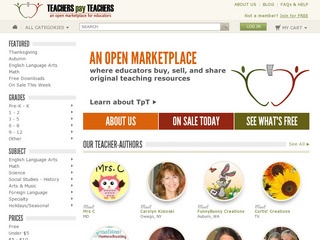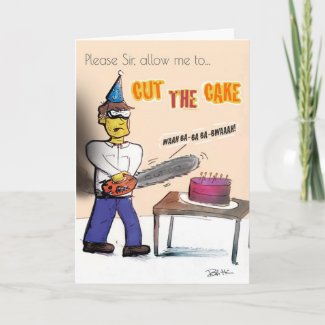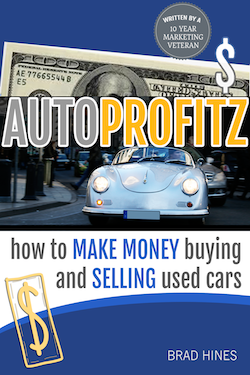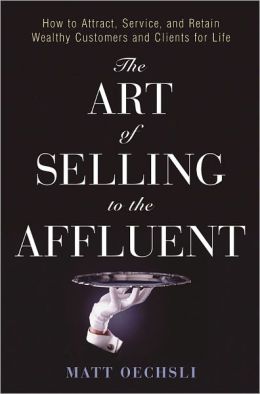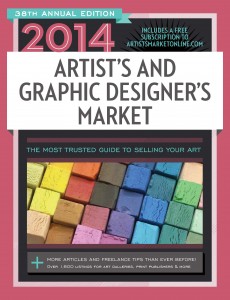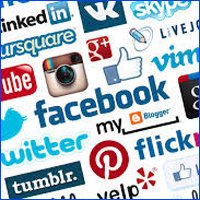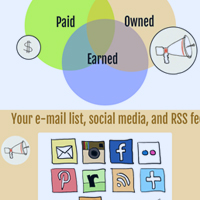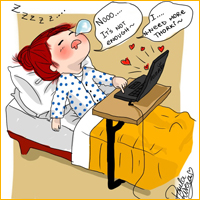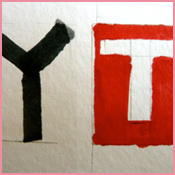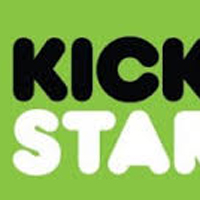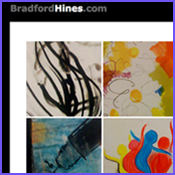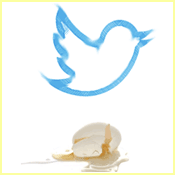(This post was originally written in 2013, became the most popular post in my blog out of 100+, and so I update it with what's current when I can. It's long, so grab a cup of your favorite warm beverage, and enjoy!)
There are numerous ways in the web 3.0 world to make money online with your art and illustrations. Many of the methods outlined will also double for crafts and photography, but this primer is focused on traditional paper/canvas art and illustration. Both fine art (the fancy stuff) and simple illustration can make you money online largely two ways: selling it outright, or licensing it. There are many great websites that can help you accomplish either:
Your own website: Although you could certainly make money with your art without it, I highly recommend having your own website to showcase your portfolio whether or not you are just an amateur dabbling in selling & licensing art such as myself, or certainly if you are a professional 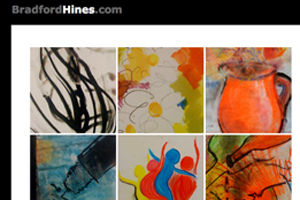 who is looking to support themselves entirely with income from artworks. As artists promoting ourselves, a website will act as a home base linking all of our social networks to sell art, and as well to display works, information about ourselves, and a way for fans to contact us. A good art portfolio site might very well even have an e-commerce platform from which to sell works. There are many e-commerce platforms available, I recommend Shopify and Storenvy, and purchasing a dot com domain name and web hosting through Bluehost. This is not a paid endorsement so much as an affiliate link, but I do believe Bluehost is pretty hassle free, and in my opinion the best blend of: cheap, easy to use, and good customer service when there is a problem.
who is looking to support themselves entirely with income from artworks. As artists promoting ourselves, a website will act as a home base linking all of our social networks to sell art, and as well to display works, information about ourselves, and a way for fans to contact us. A good art portfolio site might very well even have an e-commerce platform from which to sell works. There are many e-commerce platforms available, I recommend Shopify and Storenvy, and purchasing a dot com domain name and web hosting through Bluehost. This is not a paid endorsement so much as an affiliate link, but I do believe Bluehost is pretty hassle free, and in my opinion the best blend of: cheap, easy to use, and good customer service when there is a problem.
You can also self-host a site using Wordpress or tumblr which also require no web coding knowledge. Sites like wordpress one use "themes", search for "art portfolio themes". A great Wordpress shopping cart is a plugin called "WooCommerce" which makes it easy to add products, keywords to them, prices, etc. from a database.
Selling:
There are literally hundreds of websites to sell your art through, but I will go over some of the better ones.
Amazon, they have a special link a lot of people don't know about for Fine artists to submit their work here.
ArtPal.com is a free membership website that takes a very small commission for works sold.
Artfire.com is a comprehensive marketplace similar to Etsy.
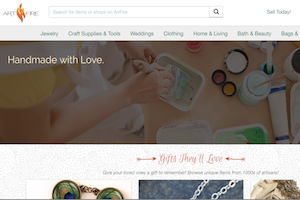
eBay
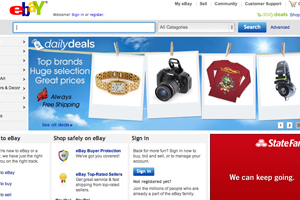
Ebay, the site that started out for people to sell collectibles and knickknacks, is still a great place for selling art. Although they don't specialize in art, you may already be familiar with the site, and it has a huge market of people looking for art on it. Works can either be listed as a fixed price "Buy Now", or be put up for auction.
etsy.com

Etsy is specializes in all "artsy" and handmade things, and this certainly includes your 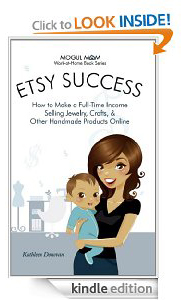 fine art and illustration; whether it be on paper, canvas, or a porcelain bowl. Etsy can connect you with a staggeringly big art market, and is great to use for carving out a niche. I recommend the book on the right.
fine art and illustration; whether it be on paper, canvas, or a porcelain bowl. Etsy can connect you with a staggeringly big art market, and is great to use for carving out a niche. I recommend the book on the right.
TopHatter.com is another auction site for selling goods that can be useful for artists.
Artiscle is an open platform for artists to sell their work, that is based on the communities that the artists each come from. It is a clean and easy to use website.
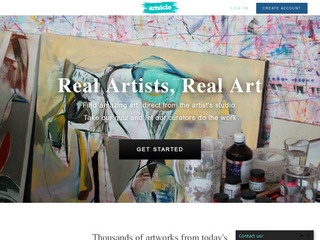
20x200 is another major seller house, exclusively for art. They are re-vamping their website at the time of this writing.
Art Licensing & Merchandising aka "Print on Demand":
Licensing-or sometimes you'll hear "merchandising- is when you simply sell someone the right to reproduce images of your art, but you retain the original. Here is an example from my Zazzle store, I made a one panel cartoon awhile back about being from Boston, and I have licensed it to Zazzle.com to be printed on postcards people can buy, when people buy a postcard, I get a royalty from the sale.
CafePress.com
CafePress.com is probably the biggest merchandising and licensing site. You can use them to put your art images on hundreds of different products that you can then sell  for royalties. I use them myself for both my Dimwitz Comics, and also my fine art. Take a look at my store to see an example of what one looks like: cafepress.com/dimwitzcomics. You can use them to sell everything from coffee mugs to actual prints, and many things in between like clothing. A lot of people say that CafePress' image quality can be low sometimes, and I agree but I'm sure they are working to improve it. Being able to see your image on a finished product is great though.
for royalties. I use them myself for both my Dimwitz Comics, and also my fine art. Take a look at my store to see an example of what one looks like: cafepress.com/dimwitzcomics. You can use them to sell everything from coffee mugs to actual prints, and many things in between like clothing. A lot of people say that CafePress' image quality can be low sometimes, and I agree but I'm sure they are working to improve it. Being able to see your image on a finished product is great though.
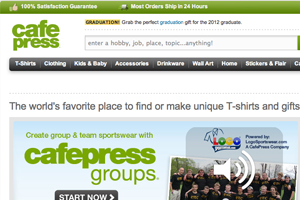
Zazzle.com is the same kind of platform as CafePress, and I definitely prefer Zazzle, but that could mostly just be because it's the one I got used to (the designing of products seems easier to me on Zazzle). Which site is better is actually a hotly contested issue. A Google search for "Cafepress vs. Zazzle" reveals endless arguing back and forth in forums over which is better. I have used both sites, there are things I like about each, and things I don't. It really comes down to personal preference. They have a wide range of products from cell phone cases to pillows to posters and back. Here is a poster I licensed them one of my pastel paintings:
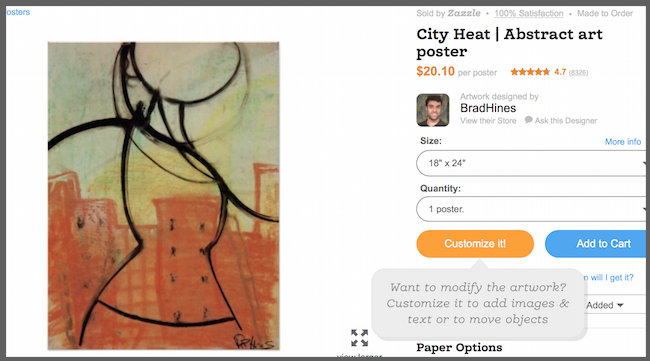
I will say the first time I ordered some postcards off of Zazzle, they didn't come as had been pictured–but they reimbursed me and I haven't seen that problem since. I do like the sites ease of use over Cafepress, and that they allow more freedom in customizing the products. Check out my store at Zazzle as an example of an entire store.
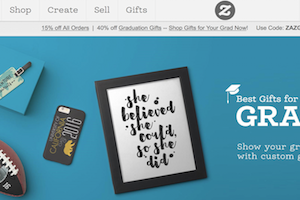
Below are some similar sites to Zazzle and CafePress I know less about for now, but assure they are major, competitive POD sites:
ImageKind.com
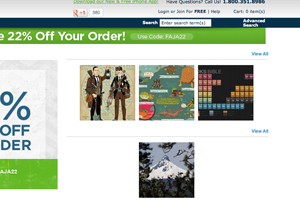
Printfection.com
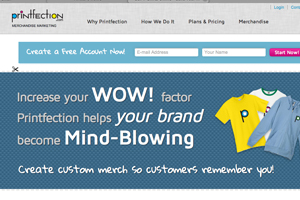
Art.com is also a very major art site, and they too give users the ability to put personal photos on everything from paper to canvas.
IcanvasArt.com is yet another photo to art print site.
FineArtAmerica.com Is an extremely easy to use major marketplace. They bifurcate their selling platform for specializing to either individual artists (or photographers) and or to galleries. The link above takes you directly to their selling page.
Snapwi.re is one of the few sites I will reccommend for photographers (Disclosure: I am an investor in SnapWire), it is one of the only Microstock photography websites where starting day one, you can take assignments for major companies for the chance to have your photo selected as the one they license. Currently only open for photography, but check out 99 designs for the equivalent for graphic design.
Art Marketing, some umbrella advice for all channels:
You can have the best website ever, and be on all of the above art platforms, but it will still behoove you to learn all you can about art marketing in and of itself. It will be hard to be successful with your creations without some savvy in that domain. For starters, I recommend reading my article on marketing tips for selling online: Bonobos Pants Marketing Case Study and numerous other articles herein on BradfordHines.com of course. Read up on things like personal branding, e-commerce, e-mail marketing, social media marketing (Pinterest is of of course huge in the arsenal of marketing tactics for 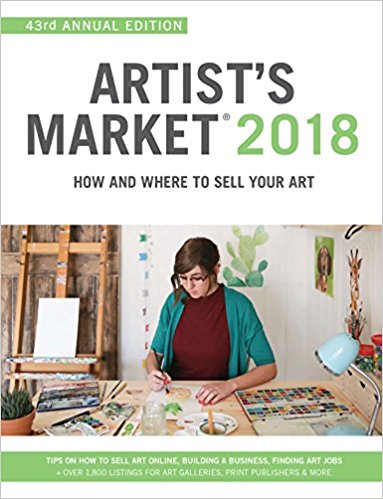 artists), digital public relations.
artists), digital public relations.
As an artist of any type, hopefully you already have some understanding of the nitty gritty of how to make a work look its most appealing, like for example how to photograph a piece, keeping websites looking clean and intuitive, etc.
All artists and illustrators, no matter what they do, should own the most current copy of The Artist's and Graphic Designers Market for the current year (shown left). The book is indeed the counterpart for Writer's Market, if you are maybe familiar with the same reference book professional writers use.
EmptyEasel.com
Empty Easel is a great all encompassing source for how to market art on the internet, plus they have an easy to use art submission form.
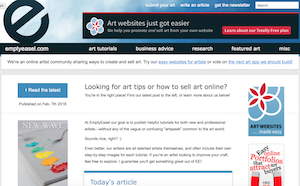
DeviantArt.com
This is an online community of artists where you create a profile and promote your works. It seems to be better suited for a certain style of art–more underground stuff if that makes any sense.
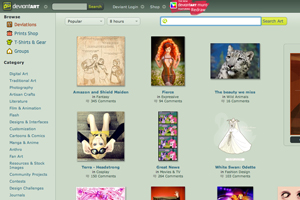
Taking Good Photos: If you are going to put your art on the internet in any way, it's really crucial to learn how to take great images of you art. I recommend this article by Empty Easel: Empty Easel on photographing art.
Social Media/Networking Sites:
I recommend all the major social networking sites for selling your art: Facebook, Twitter, Google Plus, and especially visual pinning sites like Pinterest and The Fancy; but, to choose which to be on. Even Linkedin can be a good site to use, especially for networking. Do get together a good social media plan, as the visual arts integrate beautifully with the highly visual aspect of social media: How to write a good social media plan for your business. Don't feel bad about not being on every network, there is only one of you after all, and time needs to be focused on your core activities... like making art! Hire a freelancer off of zaarly, taskrabbit, or Upwork and have them do the social media work for you if you insist, or even get the Buffer tool to help you post to multiple networks.
Show people the artist behind the works, get a video portfolio together if you want, and use Vimeo or YouTube to promote yourself. Have a video of you in your studio briefly introducing yourself, or even working as an example (showing your story). All these sites are great ways to not just promote your actual works, but to find and engage 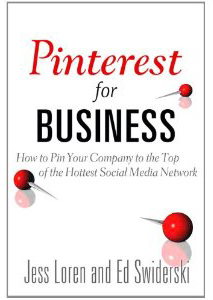 with other artists and potential customers alike.
with other artists and potential customers alike.
Pinterest is of course good, as it is an image based social media network where people "pin" images–especially art–that they like. You will want your website to include the pin tool so people can add your art this way. Search for "Pinterest Goodies" to add that functionality.
For a more comprehensive look at Pinterest, I recommend the book Pinterest for Business by Jess Loren and Ed Swinderski, especially since I am featured in it, full disclosure.
Some thoughts on branding:
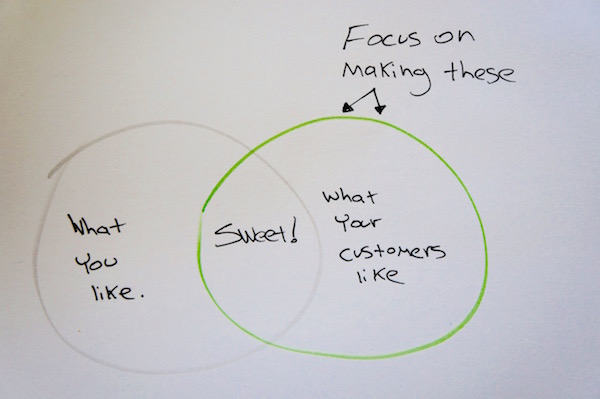 As an artist, you can place your work under the categories of 1. what you like 2. what others like, and 3. a combination of the two. While there is something to be said for making art you like, as a business person (you are prepared to be a business person yes?) are you focusing on creating what sells? This means a few truths: Making more of what people are telling you they like, and throwing away nothing (how many times has someone told you they liked something that was appalling to you/in your trash?). So if fans resoundingly like a style you have done, do a series, and do the series in a limited fashion so as to create scarcity and increased perceived value.
As an artist, you can place your work under the categories of 1. what you like 2. what others like, and 3. a combination of the two. While there is something to be said for making art you like, as a business person (you are prepared to be a business person yes?) are you focusing on creating what sells? This means a few truths: Making more of what people are telling you they like, and throwing away nothing (how many times has someone told you they liked something that was appalling to you/in your trash?). So if fans resoundingly like a style you have done, do a series, and do the series in a limited fashion so as to create scarcity and increased perceived value.
As an artist, pushing out works of a certain and recognizable style is one of the quickest ways to be known. If a person can identify your works by sight alone without being told who did it, you know you are on to something. You may already be on that level, but the point is, in the beginning of your career, it will behoove you to jump around less style wise, to streamline that association of your work. Stick with what sells, or perhaps do 80% of what you know sells, and 20% truly just enjoying yourself. Naturally, there is the likely possibility that the work you do enjoy the most is already what others want to see from you the most, as passion often breeds good beautiful art.
Art Galleries and their Online presences
I specialize in education about all things digital, so I will refer you to this comprehensive article on how to get your works in galleries. The approach there for your own online sales through your website and the above mediums, is that depending on the nature of you contract with a gallery, ultimately it is one more channel to get your name out there.
Keeping costs down
Earning money as an artist, is as reductive as having your income exceed your expenses. Don't forget to make sure you are not squandering money as a business. Check out my article here on how to save money on art supplies.
Ancillary art income

















 As an artist, you can place your work under the categories of 1. what you like 2. what others like, and 3. a combination of the two. While there is something to be said for making art you like, as a business person (you are prepared to be a business person yes?) are you focusing on creating what sells? This means a few truths: Making more of what people are telling you they like, and throwing away nothing (how many times has someone told you they liked something that was appalling to you/in your trash?). So if fans resoundingly like a style you have done, do a series, and do the series in a limited fashion so as to create scarcity and increased perceived value.
As an artist, you can place your work under the categories of 1. what you like 2. what others like, and 3. a combination of the two. While there is something to be said for making art you like, as a business person (you are prepared to be a business person yes?) are you focusing on creating what sells? This means a few truths: Making more of what people are telling you they like, and throwing away nothing (how many times has someone told you they liked something that was appalling to you/in your trash?). So if fans resoundingly like a style you have done, do a series, and do the series in a limited fashion so as to create scarcity and increased perceived value.